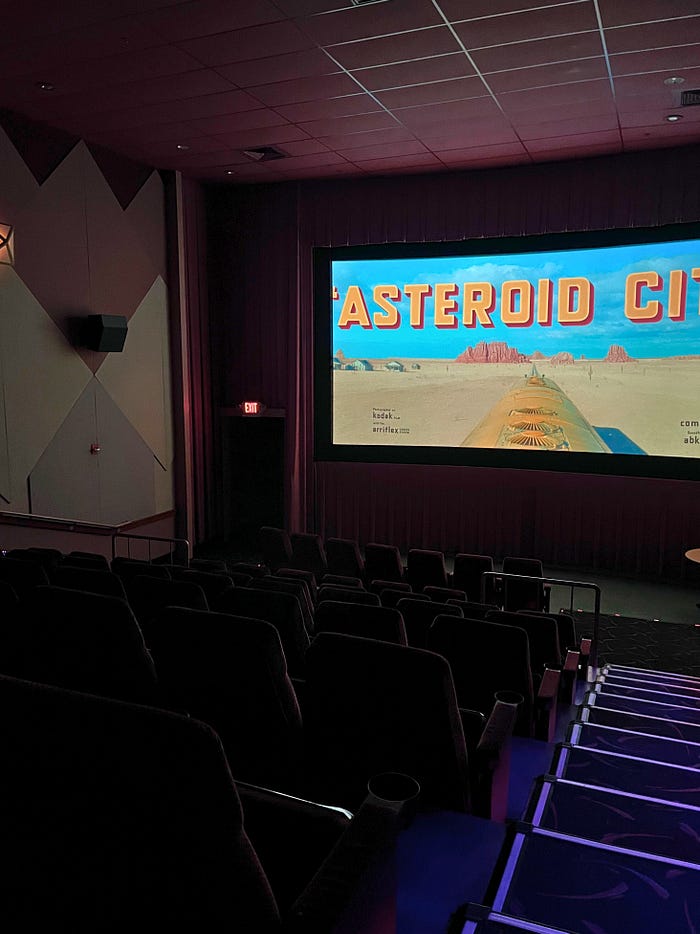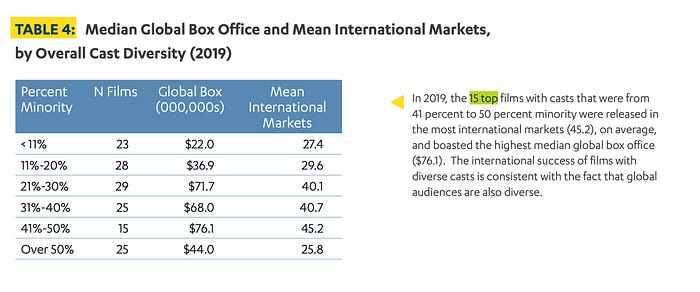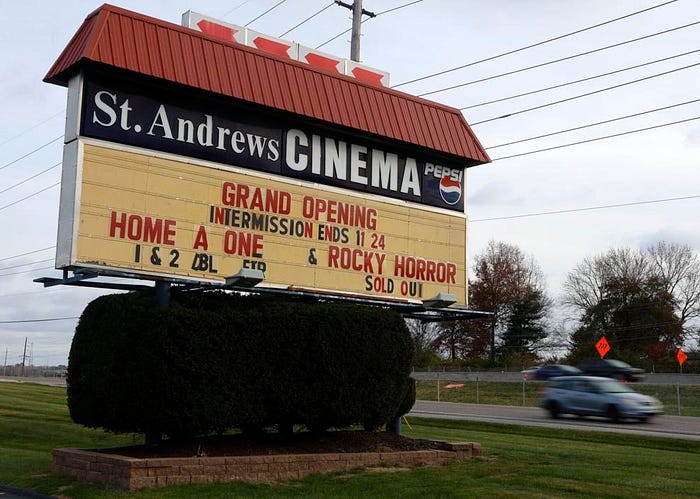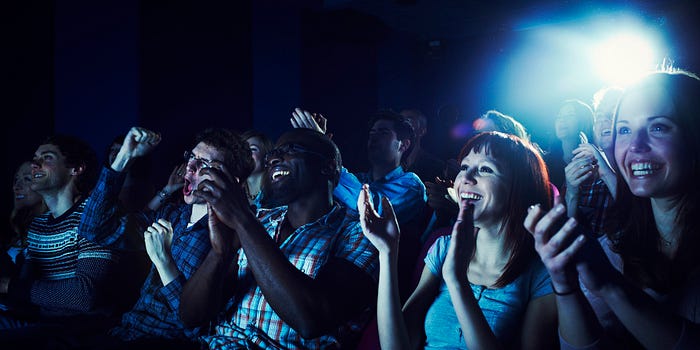Is Movie Magic Dead? A Look at the Decline in Movie Theater Attendance

Movie theaters that once were crowded and abuzz with excitement now feature hushed hallways and empty queues. Movie premieres like the much-anticipated newest Wes Anderson project, “Asteroid City,” were met with a less than enthusiastic turnout. “Asteroid City” grossed just $53 million worldwide compared to Anderson’s earlier film “The Grand Budapest Hotel”, which grossed over three times “Asteroid City” at $174 million.
Beyond major box office hits like “Barbie” and “Guardians of the Galaxy Volume 3”, movie theaters sit mostly empty during the matinee hours. An employee of AMC Theaters says population density “comes in waves depending on what movies are out.” Once a popular pastime for many demographics, today many theaters play movies to an audience of one or less.
Being alone in a movie theater, especially during a highly-anticipated release raises questions about the loss of community and increase in individual experiences rather than experiences that benefit the collective.
Why are people staying home instead of going to the movies?
Film critic Cristina Escobar says, “going to the movies and
experiencing the movie theater is a critical part of the film experience.” Streaming services and movies that are quick to release at home have influenced and perhaps desensitized movie-goers from the magic of the experience.
In today’s era of instant gratification, leaving one’s house to experience something you could do at home without distractions like phones or the ability to pause is less than desirable for some. Escobar says this changes the movie-going experience and can even “change how you feel about the films.”
Movies are too long. People don’t want to sit in a theater, unable to pay (more money now than ever) to pause a film if they need to get up and use the bathroom, for instance. Larrie Dudenhoeffer, professor of Film Studies at Kennesaw State University, points out, “It’s fine for Martin Scorsese to release a three-and-a-half hour “[The] Irishman” on Netflix during the pandemic, but I don’t want to see “Killers of the Flower Moon” in theaters because it’s 210 minutes [3 hours 30 minutes] long. I’ve got a life.”
Both studios and theaters are following the subscription service model. More movies are released directly to streaming every year. Monthly theater subscriptions with perks like free snacks and flat ticket rates like AMC Stubs, Regal Crown Club, and Cinemark Movie Club have risen in popularity in recent years. However, Dudenhoeffer says, “There’s only so much of a ceiling that they [studios] have to operate with, especially if they’re not raising their subscriber rates. It’s a completely different business model, and they’re going to have difficulties negotiating it, which we’ve seen with the writer’s strike.”
Young people are saving the movie industry. Specifically, young people ages 18–35 who love seeing superhero films. These films took five out of the ten top-grossing domestic movies in 2021. This year, there are three, both internationally and domestically, according to data from Box Office Mojo. The success of films like “Spiderman: No Way Home,” “Black Widow,” and “Shang-Chi and the Legend of the Ten Rings” show viewers’ commitment to franchise superhero films.
People want to see themselves in the media they consume. This is not a new revelation, but certainly one that Hollywood has been slow to embrace. In recent years, box office hits like “The New Mutants” and “Raya and the Last Dragon” prove that people show up when they are represented in both the cast and the story.
Escobar was on a panel in November called “Beyond Latinx Erasure in Hollywood,” where UCLA Director of the Entertainment and Media Research Initiative Ana-Christina Ramón said that during the height of the pandemic, Latinos saved the theater business. Ramòn co-authors the annual Hollywood Diversity Report, which documents changes in gender, race, disability, and other factors in television and film representation. She says that diversity sells. According to the 2020 report, “In 2019, the 15 top films with casts that were from 41 percent to 50 percent minority were released in the most international markets.” The statistics speak for themselves; the more diversity, the more distribution. This should be a warning sign for the industry. As Escobar says, “If Hollywood doesn’t start to do a better job [with representation], then they are going to lose the younger audience, and that will trickle on to a big problem with their business model.”

Escobar says viewers are tired of the status quo, “Not just that people want to see themselves, [although] that is an important part of it. If [the film] is supposed to be your reality and it feels more like a white male fantasy of what reality is, why engage with that?”
Films look different than they did twenty years ago. The 90s and 00s were peak times for romantic comedies, which were popular with women viewers. More romantic comedies might be a way to get audiences back in theaters. “‘Barbie” was so popular because a female demographic was being tremendously underserved for the last five or six years, and Hollywood was sort of under the impression that they could incorporate women into action in superhero films and be done at that,” says Dudenhoeffer. “Barbie” is the top-grossing film worldwide this year. He says that meeting the new cultural climate for young adults is key for studios to adapt to changing attitudes around movies and movie-going.
What can theaters do to bring audiences back?
Escobar leans into going to the movies as a unique and vital experience. She says that communities, particularly underrepresented ones, attend theaters for classic film events. Theaters can do a lot in their local communities to promote attendance and sales. Events like Studio Ghibli Fest and AMC’s $5 Fan Faves help remind people about the art of going to the movies. “Being a little more creative about serving content that your community actually wants can help make a big difference.” says Escobar.

Do you remember dollar/discount theaters? After a couple of months in traditional movie theaters, films would be released to play in dollar theaters, where the ticket price would be a fraction of the price of the first theatrical release. Take St. Andrews Cinema 3 in St. Charles, Missouri, where “All shows $1.00!” was their sole promotion. Discount theaters made the movie-going experience accessible to people who couldn’t afford to see the first run of the theatrical release. Dudenhoeffer says, “The financial undertaking for a family, even just a couple, but a family of four going to the movies is so much, and there’s so many people who would not be able to pay for that. The dollar theaters serve an invaluable purpose.” He posits that the process of theatrical release to home viewing should include discount theaters somewhere in the middle, “If you want to see this movie, then you have to see it in theaters.”
Longer theatrical releases with increased inclusion of discount theaters would benefit studios and audiences. The money studios make from monthly subscription prices for services like Hulu and Netflix is risky.
Dudenhoeffer doesn’t “see how companies can bank on these films making money when there’s sort of a flat monthly rate that they have to keep raising.” Given the recent writers’ strike and settlement with studios, Dudenhoeffer says studios will have difficulty negotiating the new subscription business model. Netflix has steadily increased the monthly price for their most basic (now called Standard) plan, starting at $9 per month in 2008 to now, where the price is $15.49 for new subscribers.

Going to the movies has been a historically accessible activity that all types of people enjoy. Rising ticket and concession prices have made theaters less accessible. “Maybe they are becoming a luxury in a different way than a more common experience, which I think would be a shame,” says Escobar.
The magic of going to the movies isn’t dead, but it has lost some of its life. Escobar says streaming movies at home is its own thing but shouldn’t replace movie theaters. Studios and theaters are responsible for grabbing viewers’ attention and offering a memorable and affordable experience.
